Chargers
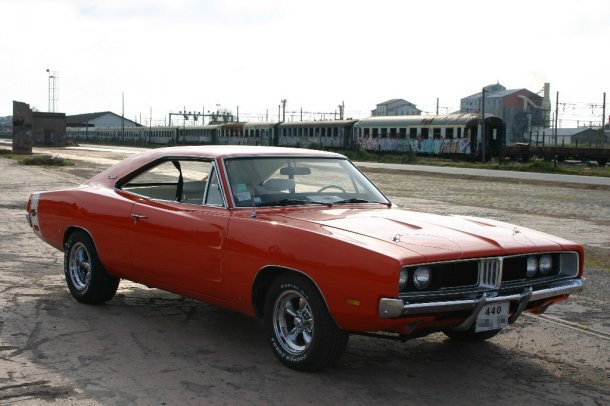
It was 1966 and my first scrape with the law. It did not go as disastrously as it could have, though the potential was certainly there for permanent physical mayhem and a significant black mark on my Permanent Record. In a way I benefitted from my callow age- just as the underage undocumented aliens are on the Southwest Boarder this summer.
As a father myself now, I marvel at the whole adventure, and wonder why Raven didn’t just knock my block off at the time.
I certainly would have been tempted in his position.
But let me digress before we get to the fun part and give you some context. There are two tracks to this, one in marketing and engineering, and the other purely social though closely related. The year was 1967 and the place is the northwest suburbs of Detroit, at the distant end of the famed Woodward Avenue. We had a riot. A big riot. The city was starting to die but we didn’t know it.
The new car models- the ‘68s- were on the street. There was a wave of high performance vehicles roaring down Woodward. The car companies were exploring new strategies to sell luxury and performance vehicles, and the specialty niche was filling up with some cars that were essentially ready for the track, right off the showroom floor.
“Little GTO” and “Won’t Come Back From Dead Man’s Curve” were on the AM radio on the dashboard- WKNR and CKLW, 80-thousand watts of power out of Windsor across the river to the south. The carmakers were exploring new ideas in the personal luxury and specialty car segments. Chrysler, fast to enter the specialty car market, selected their Dodge Division to enter the marketplace with a bigger model to fit between the wildly successful pony-car Mustang from Ford and the sleek personal luxury Thunderbird.
The T-bird had started out in 1955 as a sort of anti-Corvette in the market- good looking, sleek, sporty. Corvette went hard-core and the ‘Bird got longer and wider and comfier. Chrysler decided to us their B-body with a sporty fastback look that echoed the bizarre Marlin design from American Motors.
The fastback Charger was introduced in mid-season of the 1966 model year in direct retaliation to the Marlin, Mustang and sister ride Plymouth Barracuda. Marlin and Charger set a new standard for radical fastback design, though there was no question about who had the performance edge.
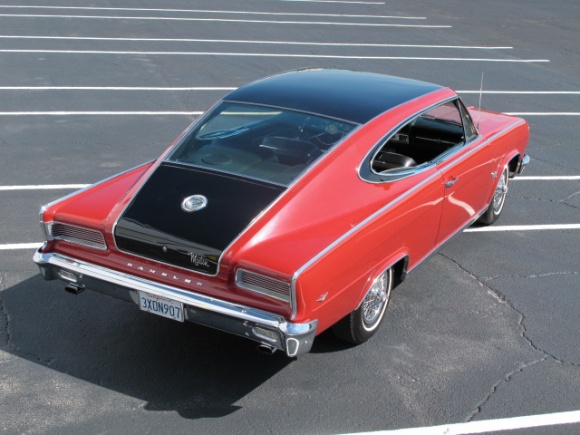
Both are strange-looking cars today. Dad’s pal Jim Alexander had the interior shop at AMC, and he and the boys at Chrysler tried for a space-age dash and functional interiors. For the 1968 model year, Chrysler updated the look to the one that would become eternal at the Duke’s of Hazzard “General Lee.”
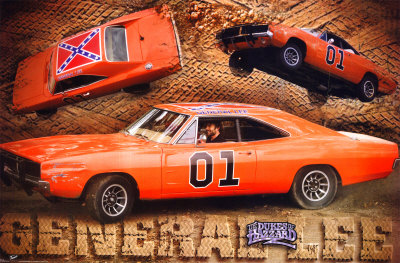
Back then, of course, it just looked edgy and totally cool. Chysler Designer Richard Sias developed an iconic look for his performance car, because that is the way the MoPar folks wanted to go: be the king of Woodward Avenue street racers. His Charger retained the full-width hidden headlight grille, and the taillights were updated to dual circular lamps at the direction of Styling Vice President, Elwood P. Engel. Dual scallops were added to the doors and hood to help accent the new swoopy lines.
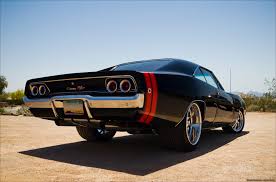
Inside, the interior had a major update- the console remained between the ergonometric front seats, but the rear seat became a standard bench. The tachometer was an option, and the smart money went for it- the other (and most critical) option is what you stuffed under the hood. The standard engine was the 318 cu in (5.2 L) two barrel carb. If you wanted to stand out at Maverick’s Drive-In or the TeePee or Ted’s, you went with the R/T model, with either the 440 Magnum engine or the monster 426 Hemi.
The stripes on the ass end were standard on the R/Ts and came in red, white or black. They could be deleted at no cost. The 1968 model year saw nearly 100,000 Chargers built, which included 17,000 R/Ts.
My pal Dick had the 440 R/t. It wasn’t his, of course. His Dad was a wheel down at Chrysler, and all the car execs, mine included, were entitled to bring home the hot models and let them be seen around town. In our case, the coolest we could get was the AMC Javelin, not a bad little car, and once we got a chance to campaign the very hot AMX. But frankly, everyone knew that some of the Chrysler execs were given access to fully race-tuned cars.
That was the social part. These cars were supposed to impose their will on the Mustangs and the GTOs and Firebirds and Mustangs and Camaros. The place they did it was on Woodward- four lanes of smooth concrete that ran from the River diagonally to the northwest through Detroit, Ferndale, Royal Oak and Birmingham.
Out beyond there, past the McManus,John & Adams Ad agency, and the stately Fox and Hounds Inn, the lights grew dimmer and you could really let those magnificent cars surge off the light and turn in some remarkable splits.
Can you imagine, these days that the car companies would send racing cars home to be driven by kids who just got their licenses?
I will have to get to that tomorrow, I am afraid. But let me tell you what a rush that Charger R/T was to drive. And we will have to talk about VASCAR, too. Timing is everything, as it turns out, and I am not talking about ETs for the quarter mile.
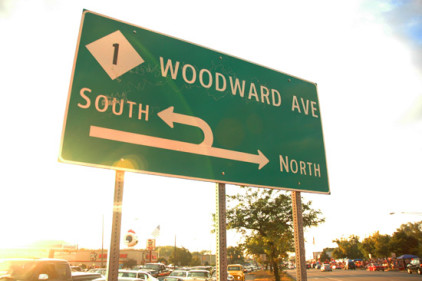
Copyright 2014 Vic Socotra
www.vicsocotra.com
Twitter: @jayare303
